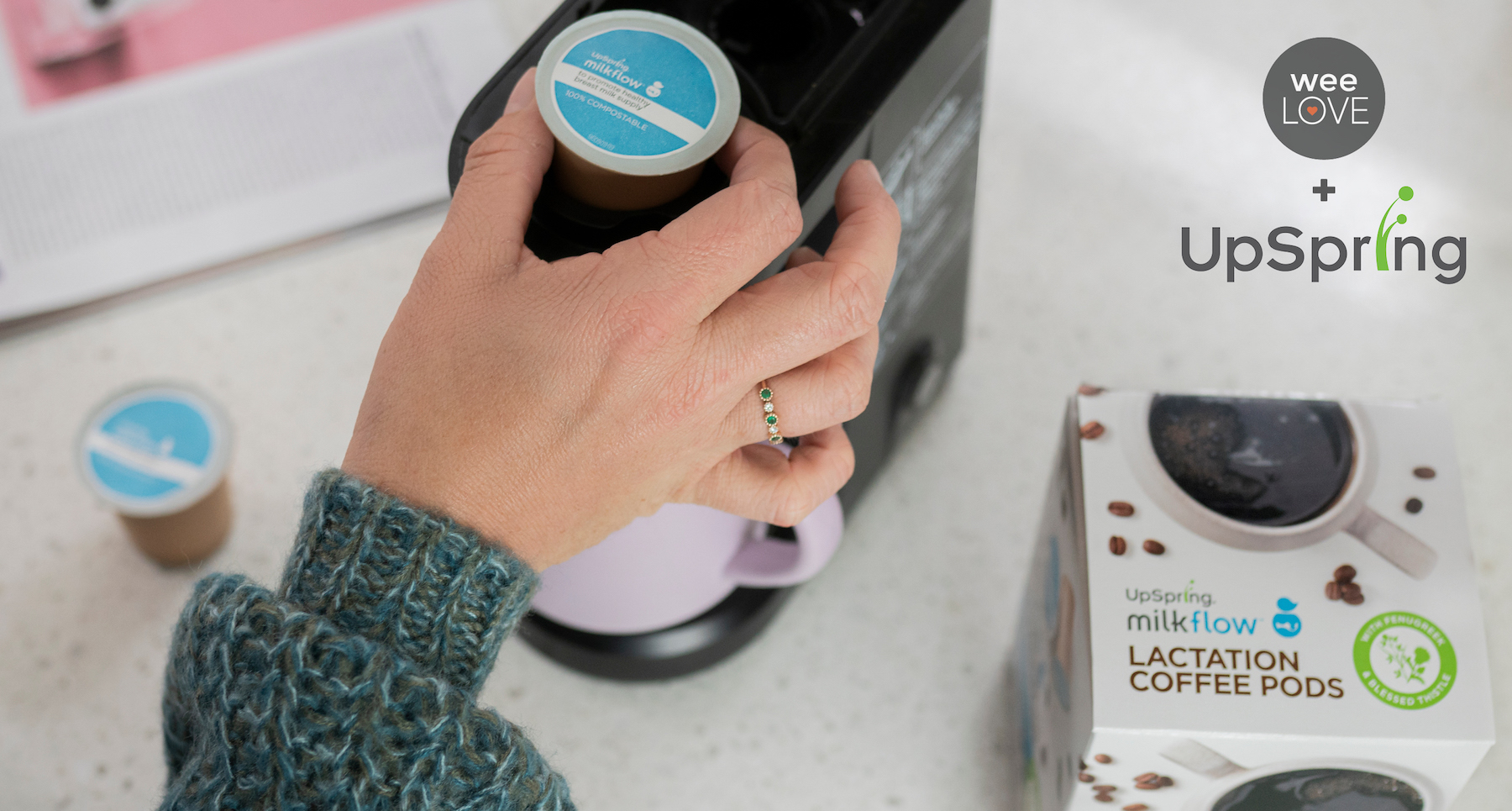Best Ways to Boost Milk Production
Breastfeeding and worried your supply is dwindling? Get tips for boosting milk production from Lactation Consultant, Wendy Wright of the 16 Minute Club and CEO, Kim Roman of Anna Naturals.
Your milk supply is determined by the stimulation your baby provides while nursing. In other words, the more you breastfeed, the more milk your body produces. So, if you seem to be producing less milk than usual, here are some ideas to boost your milk production.
Try to feed your baby more often. Research shows that when a mother breastfeeds early and often, an average of 9.9 times a day in the first two weeks, her milk production is greater, her infant gains more weight and she continues breastfeeding for a longer period. Milk production has been shown to be related to feeding frequency, and milk supply declines when feedings are infrequent or restricted. If supply is low, breastfeed your baby at least every two hours during the day. If your baby has been napping for more than two hours, wake baby for a feeding. Consider waking your baby for a least one extra night feeding, too, especially if you have a baby who sleeps for more than a four or five hour stretch at night.
Skin to skin. With baby wearing only a diaper and you wearing nothing on top or a blouse with an open front and no bra, the two of you can snuggle together with baby held upright, nestled between your breasts. Holding your baby skin-to-skin has been shown to help increase milk volume. An additional benefit is that baby is also more likely to nurse when he is “in the restaurant” and smelling your milk. Skin-to-skin contact also helps awaken sleepy babies and stimulates less enthusiastic feeders.
Nurse longer. Don’t limit the length of your baby’s feedings to a predetermined number of minutes on each side. Allow your baby to finish the first breast before switching to the other side. This gives baby an opportunity to fill up on the high-fat hindmilk brought down by the milk-ejection reflex. If you switch your baby to the second side too soon, he’ll fill up on the watery foremilk, which will make his tummy feel full but may not give him enough calories to grow and will not place enough demand on each breast to create more milk.
Try switch nursing. The advice about finishing the first breast first may not work well for babies who suck at a leisurely pace or who fall asleep a few minutes into a feeding. Switch nursing will encourage a baby to suck more vigorously for a longer period of time so the breasts are emptied to a greater extent during each feeding. In switch nursing, let the baby feed on the first breast until the intensity of his suck and swallow diminishes. Before he drifts off into comfort sucking, sit him up, switch to the other breast and encourage him to nurse actively again. When his sucking slows, go back to the first breast, and finally, finish feeding on the other breast. Burp him or change his diaper between sides, if that will help to wake him.
Try double-nursing. This is an alternative to switch nursing. After you feed your baby and he seems finished, hold or carry him upright and awake for 10 to 20 minutes, allowing any trapped air bubbles to be burped up. This makes room for more milk. Then feed him again on both breasts before you let him go to sleep. Double nursing, like switch nursing, stimulates more milk ejection reflexes, thus increasing the volume and calorie content of your milk.
Utilize breast compression. Breast compression is a simple technique to help your baby drain the milk in the breast fully. Although the compression itself does not directly make more breast milk, effective removal of breast milk in the first place does help to make more milk. Use this technique when your baby is latched on, but is not sucking because the milk has stopped flowing. This technique can also be helpful when pumping to make sure breasts are emptied as completely as possible during each pumping session. To perform breast compression, have your baby latch on normally. Form a C shape with your free hand. With your thumb on top of your breast tissue, fairly far back, compress the breast. Do not roll your fingers down toward the nipple as you do during hand expression, simply squeeze. Hold the compression until the baby stops sucking. Repeat compressions as often as necessary, you should notice breasts feeling more empty after a feeding/compression session than simply a feeding session alone. Breast compressions are particularly helpful with infants who are quick to fall asleep. A hands free bra can be a useful tool when adding compressions to your pumping technique.
Power pumping. Power pumping is a technique that involves mimicking the frequent feeding of a baby experiencing a growth spurt. During these times your baby’s more vigorous, more frequent and longer suckling triggers an increased release of prolactin from the pituitary gland – the ‘make more milk!’ message. It works by repeatedly emptying the breast, signaling the body to make more milk, more quickly.
To power pump, pick one hour each day or night (eg. 7 am every morning) and use the following pumping pattern:
- Pump for 20 minutes; rest 10 minutes
- Pump another 10 minutes; rest for 10 minutes
- Pump again for 10 minutes; finish
This provides 40 minutes of pumping in a 60-minute period. Some women find implementing power pumping on three consecutive days or nights is sufficient, while others may power pump for up to seven consecutive days to get results.
Herbal fenugreek tea. Fenugreek is a common galactagogue (a substance that promotes lactation) and can be used to help increase milk supply. Fenugreek works by stimulating sweat glands in the body, of which milk ducts are included. Frequent consumption of fenugreek tea (typically 1-3 cups per day) can increase and sustain your supply. Results are usually seen within 24-48 hours of starting a fenugreek regimen, and will remain until you discontinue use. You may notice a maple-syrup smell after frequent use, which is completely normal (and it is sometimes even encouraged to use enough to achieve this effect). Aside from the syrupy side effect, the only other side effect to note is that fenugreek may lower blood glucose levels so be sure to consult your doctor or midwife before use.
Oatmeal. While not as proven a way to increase supply as consuming fenugreek tea, oatmeal does work for some women. This might be due to it’s high iron concentration or simply due to its “comfort food” feel. Because low iron levels, along with stress, can have a negative effect on milk supply, oatmeal seems to be a good (and tasty!) choice for those struggling with supply issues.





Fenugreek is not good for people with thyroid problems. I forget what the trouble is, but I remember that they should not take it.
Thanks for the comment, Jeanne! We should add that as with most supplements, always be sure to check with a medical professional to make sure they won’t exacerbate a medical condition or interfere with any other medications.
Help!!! I have a 5 month old and up until now Ive had tons of milk. Within the last week my milk has been diminishing. I know I’m supposed to keep latching her on to help produce mire milk but she gets very frustrated because there is no milk. What do I do?
Hi April! Our best advice would be to contact a lactation consultant in your area–they should be able to help you with your supply concerns–in the meantime, in addition to the suggestions above, be sure to keep nursing, drink plenty of water, and take in enough calories.
Fenugreek did not work for me so I switched to Fennel. It works within 5 hrs of taking it. I take 3 times of day with plenty of water.
Breast stimulation (massage, etc) increases milk supply. Also, your little one’s sucking is much more stimulating than a breast pump. I’ve heard there is also a tea called “Healthy nursing tea” for nursing moms that’s supposed to increase milk supply. At least it worked for me, not sure exactly how it works for you, but you could probably look it up online.